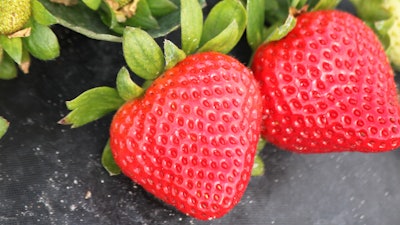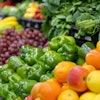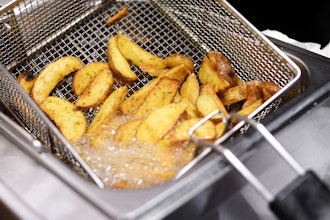
In the heart of Florida, a small town, Plant City, emerges with a legacy as rich and flavorful as the strawberries it cultivates. Renowned as the winter strawberry capital of America, this town's story is not just about the fruit but also the resilience, innovation and community spirit that have shaped its journey. The Florida Strawberry Festival, a vibrant testament to this legacy, celebrates not only the harvest but the generations of farming families whose dedication has made Plant City synonymous with succulent winter strawberries.
An annual celebration of farming heritage
The Florida Strawberry Festival stands as a pinnacle of this heritage. Since its inception in 1930 by the Plant City Lions Club, and resuming post-World War II under the organization of the American Legion Post #26, the festival has grown into a nationally recognized event. It's a celebration that bridges past and present, offering a taste of tradition through exhibits, shows, and, quintessentially, strawberry-infused delicacies.
As visitors enjoy the sweetness of a strawberry shortcake cookie at the Florida Strawberry Festival this week, they will partake in a tradition that bridges past and present, a celebration of heritage that promises to continue for generations to come.
Roots running deep
Plant City's identity has always been deeply rooted in the city's history, culture and economy, stretching back over a century to the development of the area by visionary figures like Henry Plant in the 19th century. By extending the railroad network into this rural part of Florida, Plant not only connected a small town to the larger market of Tampa, but also revolutionized agricultural practices and opportunities. This connection allowed local farmers unprecedented access to markets beyond their immediate locale, enabling the distribution of their strawberries across the region.
However, this transformation was not without its challenges. Early farmers grappled with the logistics of transporting perishable goods, the unpredictability of weather, and the need to rapidly adapt farming techniques to scale production. Despite these hurdles, the successes were profound. The railroad catalyzed a boom in strawberry farming, attracting more farmers to the area, fostering a community centered around strawberry cultivation and laying the groundwork for what would become a defining feature of Plant City's identity.
A new generation emerges
Today, the descendants of those early pioneers continue to innovate, blending tradition with technological advancements. Advanced irrigation systems have become a staple among local farms, utilizing precise water delivery techniques such as drip irrigation to conserve water - a critical resource in agriculture. This method minimizes waste and ensures that plants receive the optimal amount of hydration directly at their roots, promoting healthy growth without the excessive use of water.
Organic pest deterrents also play a crucial role in Plant City's strawberry farming. Moving away from traditional pesticides, farmers now employ more sustainable methods to protect their crops. These include the use of natural predators, biological pest controls and organic compounds that deter pests without harming the environment or the health of consumers.
Perhaps the most futuristic of these innovations are the season-extending growing chambers. These controlled environments allow farmers to produce strawberries outside the traditional growing season, ensuring that fresh berries can grace holiday tables even in the coldest months. These advancements not only enhance sustainability and profitability but also ensure that Plant City strawberries remain a staple on tables, say through the rich flavors of berry compote on a dollop of ice cream, even outside the traditional growing season.
But the journey continues as these modern strawberry farmers face a slew of new challenges. Rising operational costs, including the expenses associated with adopting new technologies, and the ever-present issue of labor shortages, significantly impact day-to-day operations. The physical labor required for strawberry farming is intensive, and the industry has historically relied on a workforce that is increasingly difficult to sustain.
The community's response? A pivot towards mechanization where feasible, and an embrace of agritourism, inviting the public to engage directly with the farming process through u-pick fields, farm tours and roadside stands. This not only addresses financial pressures but also fosters a deeper connection between the community and its agricultural heritage.
A testament to resilience and community
The Florida Strawberry Festival, along with Plant City's enduring commitment to strawberry farming, paints a vivid narrative of resilience, innovation and community. It is a story that has adapted to the ebb and flow of time while steadfastly remaining true to its roots, ensuring that the legacy of its strawberry fields continues to flourish for generations to come.
Through every berry picked and every strawberry spoon cake shared, Plant City's strawberry fields are more than just a source of fruit; they are a testament to a community's enduring spirit and commitment to innovation and tradition. This story, rich with the flavors of hard work, dedication and teamwork, continues to unfold, promising that the sweet rise and dominance of Plant City's strawberry fields will remain a vibrant chapter in American agriculture.
Shruthi Baskaran-Makanju is a food and travel writer and a global food systems expert based in Seattle.






















